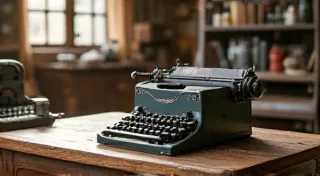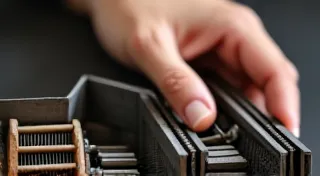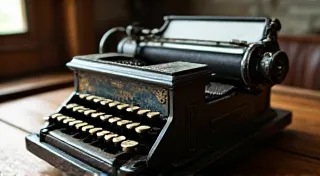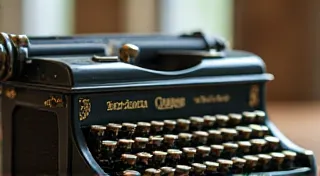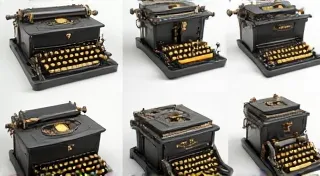Troubleshooting a Sticking Typewriter Carriage
A sticking or jammed typewriter carriage is a common problem for vintage typewriter owners. It can be frustrating, preventing you from typing and making the machine unusable. Luckily, most carriage problems are relatively simple to diagnose and fix with a little patience and the right approach. This guide will walk you through practical steps to resolve issues with a sticky typewriter carriage.
Understanding the Carriage Mechanism
Before diving into troubleshooting, it's helpful to understand how the carriage works. The carriage holds the typebars and moves across the platen (the roller you type on). It's driven by a complex system of springs, levers, and often a ratchet mechanism. Friction and accumulated debris are the most common culprits behind a carriage that refuses to move freely. Understanding the intricacies of a typewriter’s design is a bit like understanding a miniature machine shop; even subtle issues can cause major problems. If you’re new to typewriters, learning to identifying typewriter models can give you context for its potential quirks.

Common Causes of a Sticking Carriage
- Dried Lubricant: Older typewriters were often lubricated with oils and greases that eventually dry out and become sticky.
- Dust and Debris: Years of accumulated dust, paper fragments, and other debris can impede the carriage's movement.
- Rust: If a typewriter has been stored improperly, rust can form on moving parts, causing them to seize up.
- Worn Parts: Over time, certain components of the carriage mechanism can wear out or become deformed, leading to binding.
- Incorrect Alignment: Sometimes, a part can shift out of alignment, creating friction and resistance.
- Visual Inspection: Begin by carefully inspecting the carriage and its surroundings. Look for visible rust, debris, or any obvious signs of damage. Use a bright light to help you see clearly.
- Gentle Manipulation: Try gently pushing and pulling the carriage. Does it stick in a specific spot? Does any movement produce a noticeable click or resistance? Note any patterns.
- Cleaning: This is often the first and most effective step. Use a soft brush (like a paintbrush) and compressed air to remove loose dust and debris. For more stubborn grime, use a specialized typewriter cleaning fluid or a mixture of isopropyl alcohol (90% or higher) and distilled water (50/50). Apply sparingly and wipe clean with a lint-free cloth.
- Lubrication: Once clean, lubrication is crucial. Use a typewriter-specific lubricant. Apply small amounts to the carriage rails, pivot points, and other moving parts. Avoid over-lubricating, as excess lubricant attracts dust. A long, thin applicator (like a needle-nose oiler) is ideal for precise application. Proper lubrication isn't just about applying oil; it’s about understanding which parts need it and how much. Some areas, like the key levers, can also benefit from targeted lubrication, and understanding this can be greatly aided by trying expert tips for typewriter key replacement.
- Check the Carriage Rails: These are the metal tracks that the carriage rides on. Make sure they are clean and free of debris. You may need to use a small scraper to remove stubborn buildup.
- Examine the Ratchet Mechanism: The ratchet mechanism controls the carriage’s incremental movement. If it’s sticky or damaged, it can prevent the carriage from moving. Cleaning and lubrication are usually enough to resolve this issue. The ratchet isn’t the only part of the mechanism that controls movement, and sometimes the issue lies elsewhere, such as in the carriage return itself. It's worth exploring understanding and adjusting typewriter carriage return for more insights into these mechanisms.
- Check Springs and Levers: Carefully examine the springs and levers that control the carriage movement. Make sure they are not bent or broken. A bent lever can cause binding.
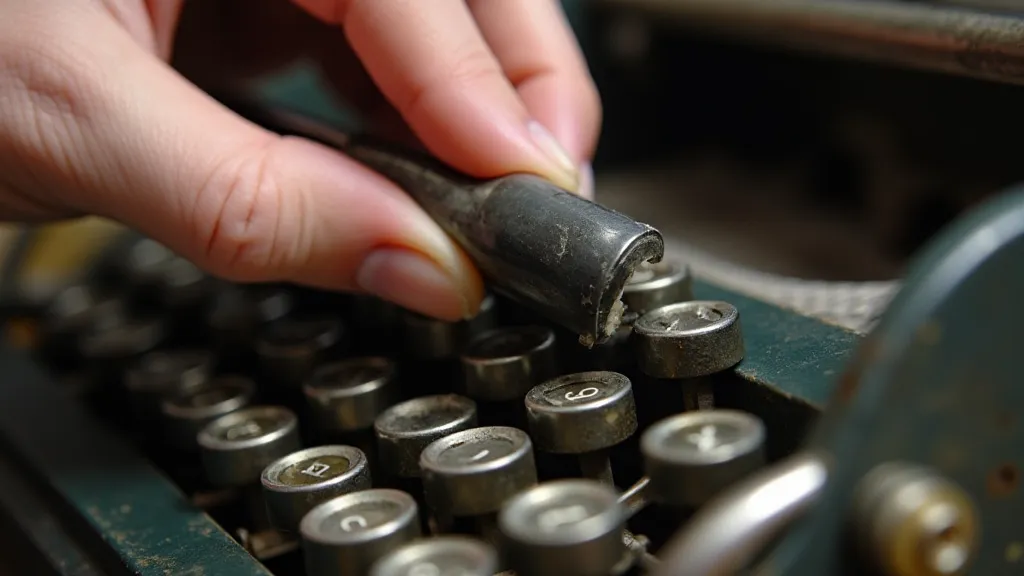
A Deeper Dive into Potential Issues
Beyond the common causes already mentioned, several other factors can contribute to a sticking typewriter carriage. The type of typewriter itself plays a large role. Vintage models, particularly those from the early to mid-20th century, often use different lubrication techniques and materials. For instance, a 1930s Underwood might respond differently to cleaning fluids than a more modern Smith Corona. The materials used in the carriage rails—steel, aluminum, or even bakelite—can all affect how easily it accumulates grime and rust. Sometimes, the problem isn't immediately obvious and requires a systematic approach to diagnosis.
One common, yet often overlooked, issue is a buildup of dried ink and toner. Over time, tiny particles of ink can work their way into the carriage rails and other moving parts, creating a sticky residue that hinders movement. This is especially prevalent in typewriters that have been used heavily or that have been stored in humid environments. Regular cleaning is essential to prevent this from happening.
Specific Brand Considerations
Keep in mind that different typewriter brands (like Remington, Underwood, Royal, Smith Corona, and Olivetti) have unique carriage designs. Consulting a brand-specific repair manual or online forum can provide valuable insights into the specific nuances of your typewriter's mechanism. Each brand, with its own engineering quirks and design philosophies, demands a slightly different approach to maintenance and repair. A Royal, for example, might require a different type of lubricant than a Smith Corona.
When to Seek Professional Help
If you’re not comfortable disassembling and cleaning your typewriter, or if the problem persists after trying these steps, it's best to take it to a qualified typewriter repair technician. Complex issues, such as damaged parts or intricate mechanical problems, often require specialized expertise. Preserving the intricate beauty and functionality of a vintage typewriter often requires the skilled hands of a professional. Furthermore, attempting repairs beyond your skillset can potentially damage the machine further.

Preventative Maintenance
To prevent future carriage problems, regularly clean and lubricate your typewriter. Keep it stored in a clean, dry environment. These simple steps will significantly extend the life of your vintage typewriter and keep it typing smoothly. Beyond regular cleaning and lubrication, consider the environment where your typewriter is stored. Extreme temperatures and humidity can wreak havoc on delicate mechanical components. It’s also wise to occasionally check the condition of the ribbon, as a degraded ribbon can leave residue on the typebars and contribute to the overall buildup of grime. To maintain optimal performance and longevity, remember that a little preventative care goes a long way. Even seemingly minor issues, like a slightly faded ribbon, can affect the overall health of the machine. Similarly, paying attention to the quality of the paper used in the typewriter – using acid-free paper helps prevent ink transfer and buildup.
Caring for the Ribbon: A Complementary Effort
The typewriter ribbon isn’t directly related to the carriage mechanism, but its condition can significantly impact the typewriter's overall cleanliness and functionality. A poorly maintained ribbon can leave ink residue on the typebars, contributing to the sticky buildup that hinders carriage movement. Similarly, a degraded ribbon can cause uneven printing and damage the platen. Regularly cleaning or replacing the ribbon is crucial for preserving the typewriter’s performance and longevity. If you're looking to further improve your typewriter care routine, you may find cleaning and preserving typewriter ribbons incredibly useful.
